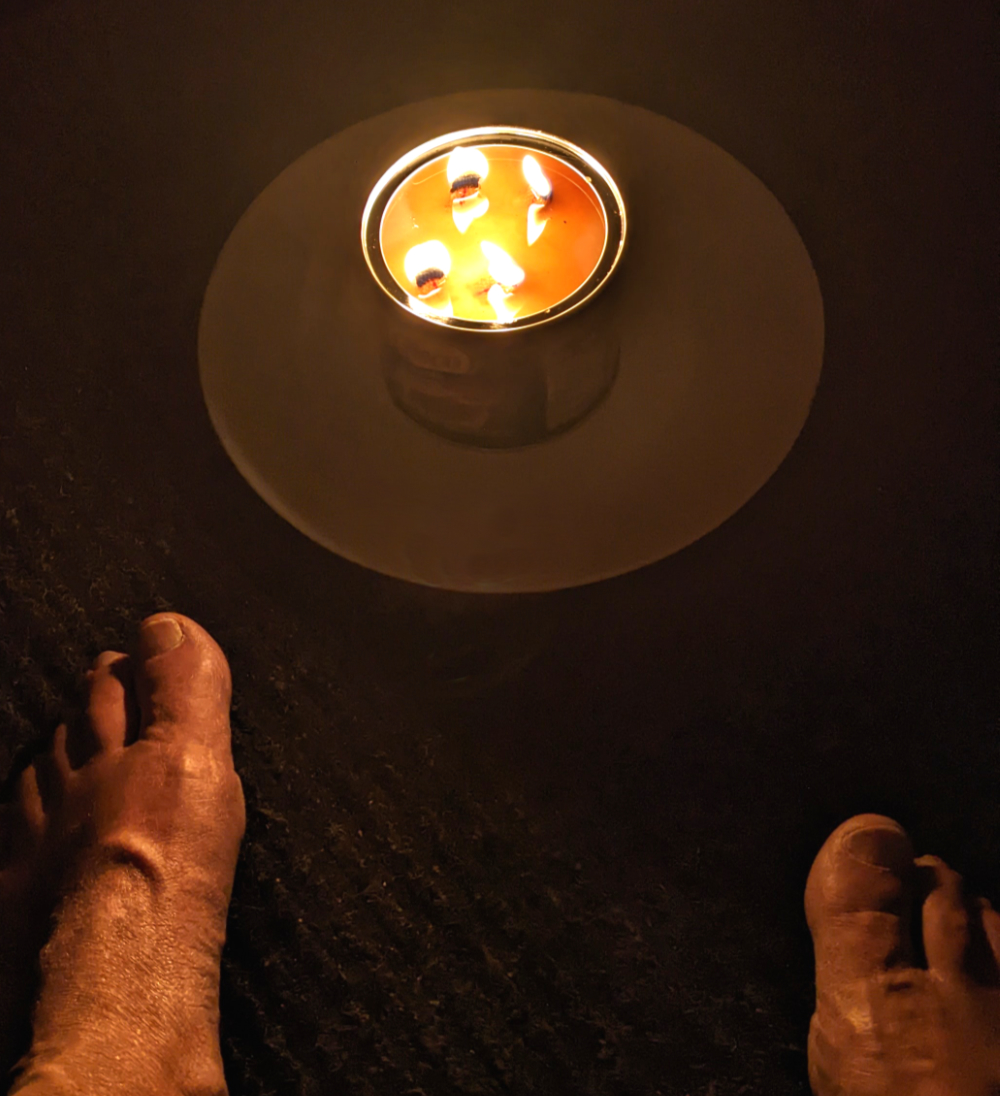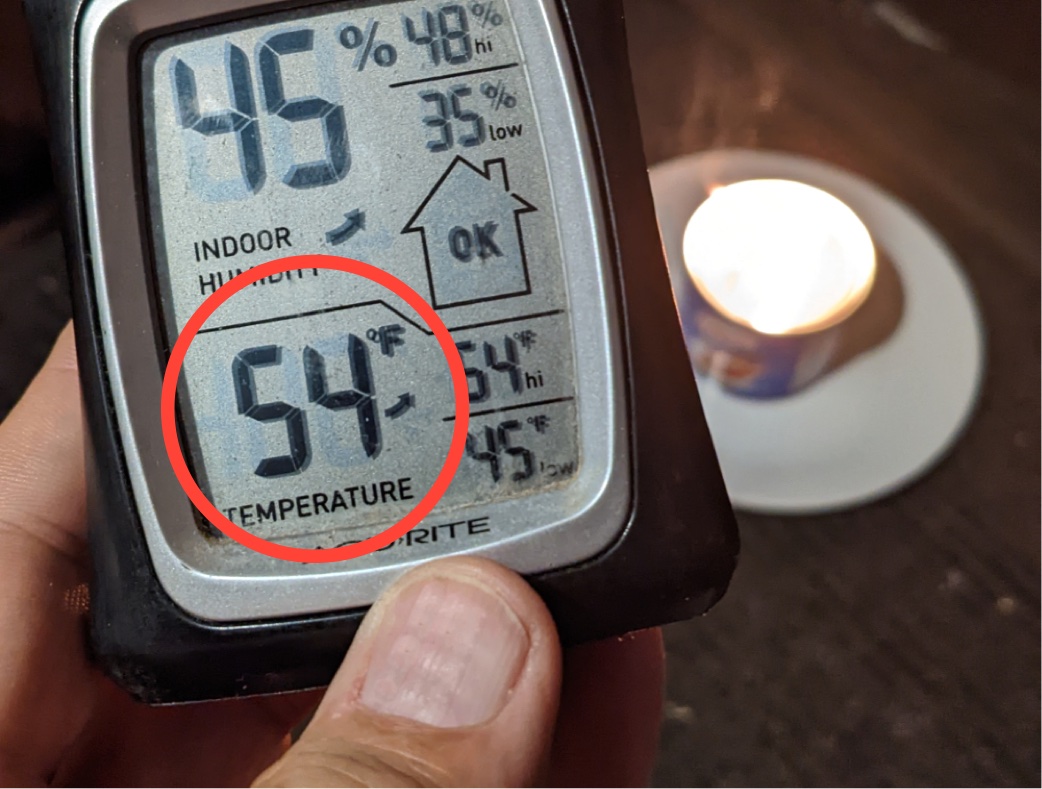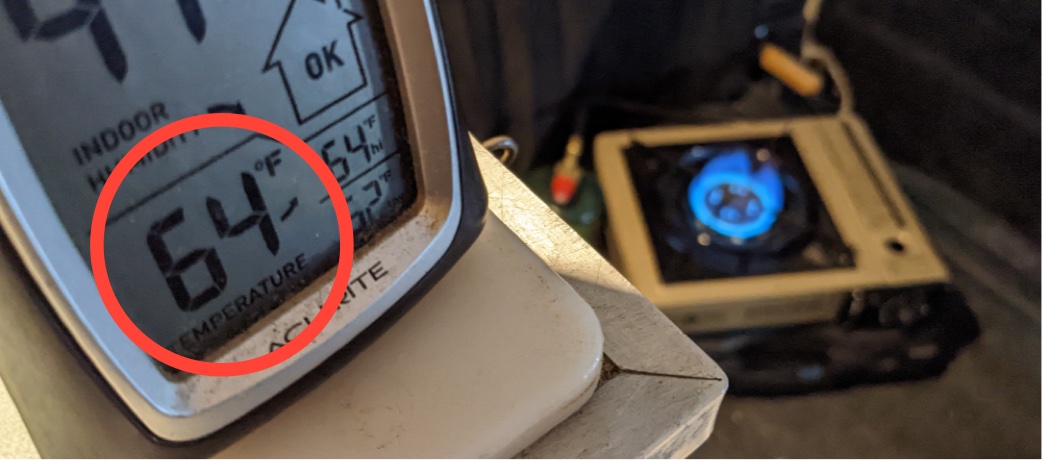
For liability’s sake, I have to say not to try this or anything like it.
A FEW YEARS AGO, heaters made from clay pots and tea candles were a big thing on the Internet. They promised cheap, clean heat without pressurized gas, electricity, or burning wood. Perfect for mobile off-grid living. But while they delivered on the cheap and clean part, the heat part was… disappointing.
Now the hot thing (pun intended) is the Crisco candle. Poke some lantern wicks into a can of vegetable shortening, light them, and presto, days of heat.
I was skeptical for a couple of reasons. First, I’ve had enough cooking accidents involving grease fires that the idea of starting one intentionally in the confines of a vehicle didn’t sound like a good idea. And burned cooking oil isn’t one of my favorite aromas. Secondly, candles just don’t put out much heat — unless you have a lot of them — like several dozen large ones.
For liability’s sake, I have to say not to try this or anything like it.
Giving it a try
But, as they say, don’t knock it unless you’ve tried it. So while doing my weekly shopping at Walmart I grabbed a small can of Crisco and, from the camping aisle, the last lantern wicks on the shelf. (If this craze gets big enough, I foresee Walmart pairing shortening and wicks side by side on the shelf.)
I inserted and trimmed the wicks as shown in several videos, then went outside to light the “heater.” I wanted to see if and how it burned. Would it be safe in my van? It passed that test.
Now, the thing with wicks — particularly wide, thick ones like these lantern wicks — is that they need to be just the right length. Too long and they create sooty smoke, too short and they won’t burn. That’s why lanterns have a knob you turn to adjust the wick. Crisco cans don’t have knobs (only warnings not to expose it to heat), so you adjust wick length through a combination of how far you poke the wicks into the shortening and how much you snip off.
For liability’s sake, I have to say not to try this or anything like it.

Test conditions
Although I’m rarely in places that get uncomfortably cold, the forecast was for a couple of sub-freezing nights. So after dinner I turned off anything that generated heat — except myself — and let the van cool down until about 4 AM, the coldest part of the night. The internal temperature was 46°F/7.7°C when I started the test.
The test
I struggled with lighting the wicks until I trimmed off the blackened tips from the earlier test. Then I had to fiddle with the length again once they were burning.
Then I moved the candle to the floor so that the rising heat wouldn’t leave the lower half of the van cold.
I observed a while. Ten… fifteen minutes. Was everything going to be okay, what with four good sized flames burning? Could I feel it getting warmer? The thermometer up on the counter said it had warmed to 47°F8.3°C. Okay, but not enough to keep me from getting back into bed.
For liability’s sake, I have to say not to try this or anything like it.
But I couldn’t sleep. I didn’t trust the open flame. What if I had had some type of fireproof cylinder around it? Or a clay pot? But I didn’t, so I watched for another half hour and checked the thermometer again. It said 54°F/12.2°C.

Well, that was a lot more than I had expected. Would it get warmer if I let it burn the next few hours until dawn? Might it break 60°/15.5? I didn’t want to stay up and watch. I extinguished the candle and got back under the covers. That’s when I noticed the air smelled kind of nice. That was a surprise.
For liability’s sake, I have to say not to try this or anything like it.
Conclusions
A vegetable shortening candle can produce some useful heat. I think the size and number of wicks make that possible. I suspect more wicks equals more heat. So a larger can with eight wicks? Multiple cans?
I would highly recommend some type of shield around the candle. A piece of stove pipe, for instance. If it’s something with more mass, like a clay pot, then it could absorb and hold some of the heat. And you would probably want something that blocks the light if you’ll be trying to sleep.
The wicks will need to be adjusted periodically, so this isn’t a light-it-and-forget-it setup.
For liability’s sake, I have to say not to try this or anything like it.
Crisco shortening costs nearly twice as much as Walmart’s brand, but I used Crisco so that any unsatisfactory results couldn’t be blamed on cheap shortening. Other brands will probably work just as well.
YouTubers say a 48 ounce can of shortening with four wicks will last approximately 72 hours. So you’d need to consider the supply of Crisco you’d want on hand.
But, in the end, would Crisco candles be the solution to your heating needs? That depends upon your needs. If you just want to keep things from freezing, or just take the edge off the chilliness, then maybe yes. If you want to turn 0° into a homelike 72°, then no. At least not without a lot of these candles.
Oh, and as a comparison, my propane stove raised the temperature in the van from 46°F/7.7°C to 64°F/17.°C in just ten minutes.


I don’t like anything with a flame inside my van, I don’t even use my butane camp stove inside. I’m paranoid about fire. But if a person had no other options it could be the difference between barely surviving and surviving with a bit of comfort.
Hey Al;
I am not getting the links to work now for several emails.
I click on your link and come to the wordpress landing page not CRVL.
This.
“Welcome to the world’s most popular website builder.”
I can’t duplicate that problem at my end. It’s working normally. But I’ll contact the IT guy and see what he says.
At the bottom of the email is “Trouble clicking” and a URL you can cut and paste. Maybe try that until we figure out the problem.
Have you been clicking the comment button or the Read more of this post link?
I would also be concerned about Carbon Monoxide build up so a fresh air source would be needed, possibly reducing the effectiveness.
I tried finding a comparison of the products of combustion between fossil fuels and vegetable oil. Are plant-based fuels cleaner? Less CO? No luck.
Hmmmm. Interesting.
a)
Experiment with an inverted flower-pot over the flames, something ceramic and non-burnable.
Similar to our Wave 3 catalytic heater, just heating the air is impractical.
The heater needs to heat some thing, then that thing radiates into the room.
.
b)
Carbon monoxide produced by a candle is insignificant.
However, I anticipate everything inside will be coated in greasy fumes.
I owned a restaurant business for ten years… everything inside the building gets slimed.
I don’t think i could sleep with an open flame or two going.
A friend of mine used to use a hubcap with a candle inside and that seemed to keep the flame safer from burning things down and it also reflected out some heat from the candle. Don’t remember if it worked well or not though.
I guess the best thing would be a mini wood stove that is totally sealed up. but again you have to get the chimney clear of the vehicle so you don’t start a fire on the roof.
I love candles but I couldn’t trust myself with them inside a vehicle. I trip over everything lately and have even left pots boiling away on the stove lately. Have become quite an expert on how to clean my blackened pots. I hope to be in places more often where it’s warm but found your article interesting anyways. Sister had a moving sale so I purchased (not really just stole it lol) a brand new miniature clay fire pot for small areas. It requires “gel fuel” which I have never heard of. It’s more an outdoor heat pot like a small version of a chimaera I believe.
I bought a Kovea Cupid heater. It uses a can of butane which on low lasts 8 hours or so. Clean, easy and very small. Works well with safety features I like. Give it a try.